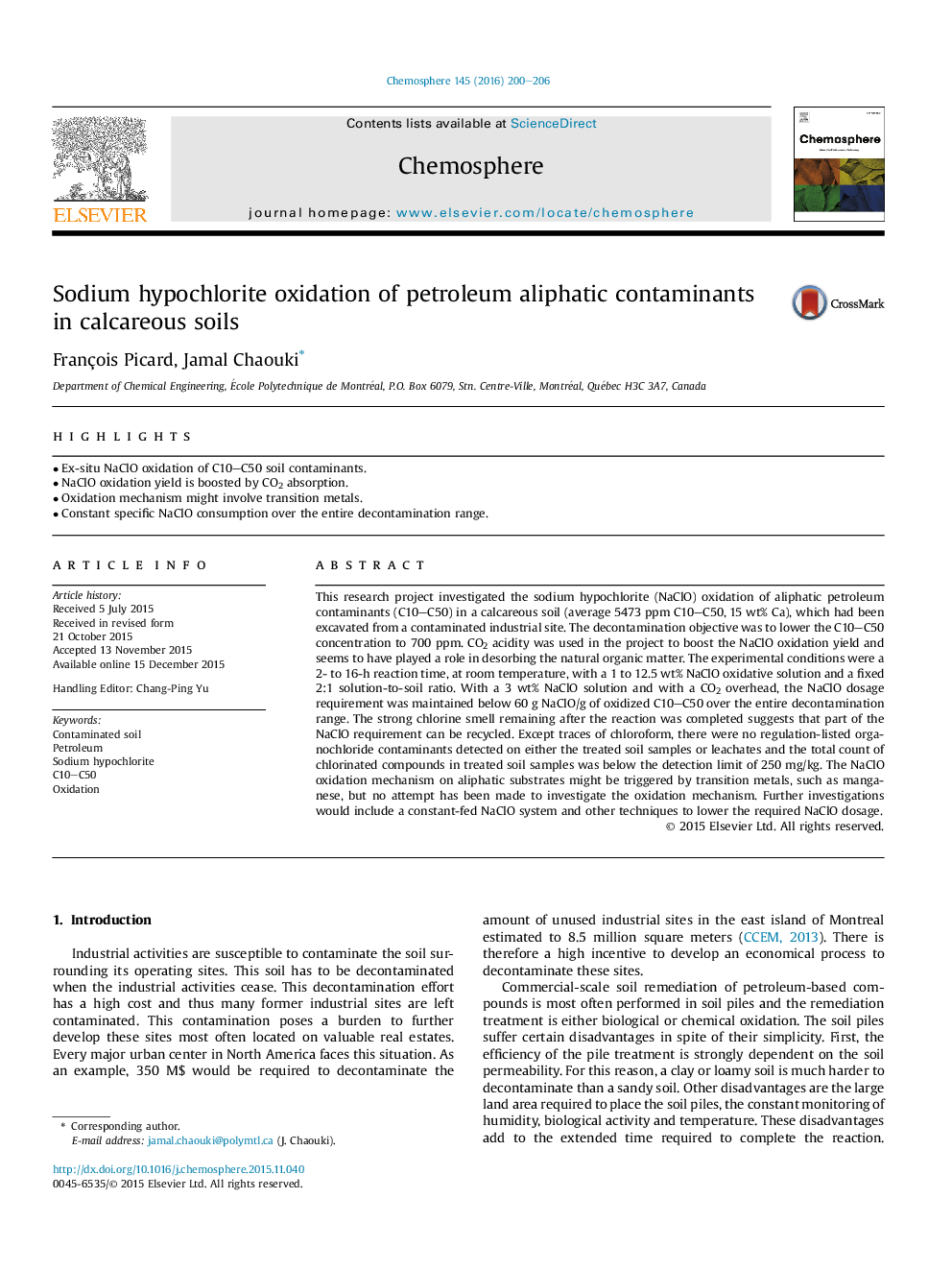| کد مقاله | کد نشریه | سال انتشار | مقاله انگلیسی | نسخه تمام متن |
|---|---|---|---|---|
| 6307025 | 1618826 | 2016 | 7 صفحه PDF | دانلود رایگان |
عنوان انگلیسی مقاله ISI
Sodium hypochlorite oxidation of petroleum aliphatic contaminants in calcareous soils
ترجمه فارسی عنوان
اکسیداسیون هیپوکلریت سدیم آلاینده های آلاینده نفت در خاک های آهکی
دانلود مقاله + سفارش ترجمه
دانلود مقاله ISI انگلیسی
رایگان برای ایرانیان
کلمات کلیدی
موضوعات مرتبط
علوم زیستی و بیوفناوری
علوم محیط زیست
شیمی زیست محیطی
چکیده انگلیسی
This research project investigated the sodium hypochlorite (NaClO) oxidation of aliphatic petroleum contaminants (C10-C50) in a calcareous soil (average 5473Â ppm C10-C50, 15Â wt% Ca), which had been excavated from a contaminated industrial site. The decontamination objective was to lower the C10-C50 concentration to 700Â ppm. CO2 acidity was used in the project to boost the NaClO oxidation yield and seems to have played a role in desorbing the natural organic matter. The experimental conditions were a 2- to 16-h reaction time, at room temperature, with a 1 to 12.5Â wt% NaClO oxidative solution and a fixed 2:1 solution-to-soil ratio. With a 3Â wt% NaClO solution and with a CO2 overhead, the NaClO dosage requirement was maintained below 60Â g NaClO/g of oxidized C10-C50 over the entire decontamination range. The strong chlorine smell remaining after the reaction was completed suggests that part of the NaClO requirement can be recycled. Except traces of chloroform, there were no regulation-listed organochloride contaminants detected on either the treated soil samples or leachates and the total count of chlorinated compounds in treated soil samples was below the detection limit of 250Â mg/kg. The NaClO oxidation mechanism on aliphatic substrates might be triggered by transition metals, such as manganese, but no attempt has been made to investigate the oxidation mechanism. Further investigations would include a constant-fed NaClO system and other techniques to lower the required NaClO dosage.
ناشر
Database: Elsevier - ScienceDirect (ساینس دایرکت)
Journal: Chemosphere - Volume 145, February 2016, Pages 200-206
Journal: Chemosphere - Volume 145, February 2016, Pages 200-206
نویسندگان
François Picard, Jamal Chaouki,
